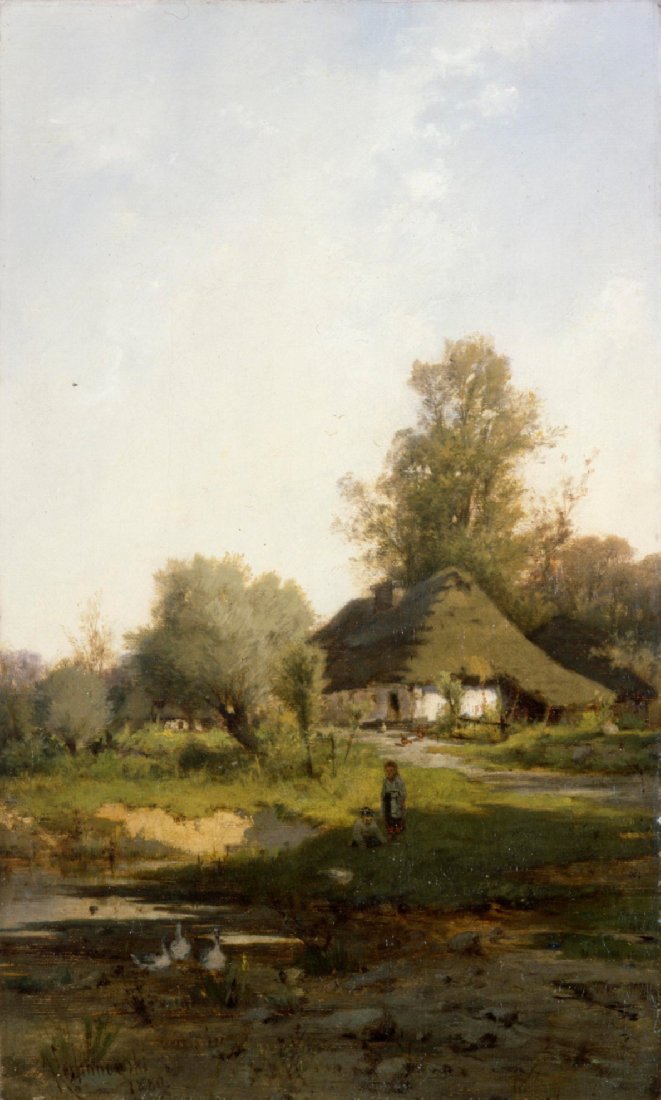Description:
Roman Kochanowski (1857-1945) left the workshops of Władysław Łuszczkiewicz and Henryk Grabiński from the Krakow School of Fine Arts, and studied from 1875-80 in Christian Griepenkerl’s studio and landscape painter Eduard Lichtenfels’s studio in Vienna, where he won the gold medal. Since settling permanently in Munich in 1881, his former views of the Vistula and the Kraków region have given way to Bavarian landscapes. The emperor Franz Joseph purchased Kochanowski’s paintings, which were frequently awarded, in 1888 and 1889. Kochanowski actively participated in the life of the Polish artistic colony in Munich. There he became friends with Piotr Stachiewicz, who, together with Stanisław Tondo, enabled him to cooperate with the Krakow magazine “Świat”, which he illustrated throughout its existence (1887-95).
Of the three works of art by the artist that were here before the war, only the very Munich-like landscape In the Countryside has survived. As with many of his early works, it shows a Podkrakowskie landscape with a rural cottage and small staffage, over which an endless expanse of blue sky stretches. The whole is kept in a muted color palette, the so-called Munich sauces, which affects the lyrical meaning of the image.
Description of the painting:
Roman Kochanowski presents a view of the Polish countryside in the painting. The foreground is extended. On the left side of the picture plane there is a pond from which a flock of geese emerges. At its edge you can see children in peasant costumes. The eye of the viewer is attracted by the white walls of the rural cottage covered with thatch, located in the second plane. Behind it, in the shade, a fragment of a barn or other outbuilding can be seen. The idyllic character of the view is completed by the chickens visible in front of the house. A road leading to it runs into the depths of the village, starting at the right edge of the picture. Behind the row of willows visible from it, the outline of another cottage can be seen. The painting can be divided into two parts along the central, horizontal axis. The lower part is a view of the village, the upper one is a blue-gray sky with outlines of clouds. The image is kept in a neutral color palette with predominant greens and grays. The Stimmung creates a slight blurring of the space created by the blurry, smudged contour. The picture is an expression of longing for a peaceful life in the Polish countryside. The view evokes memories of the homeland and arouses nostalgia.


